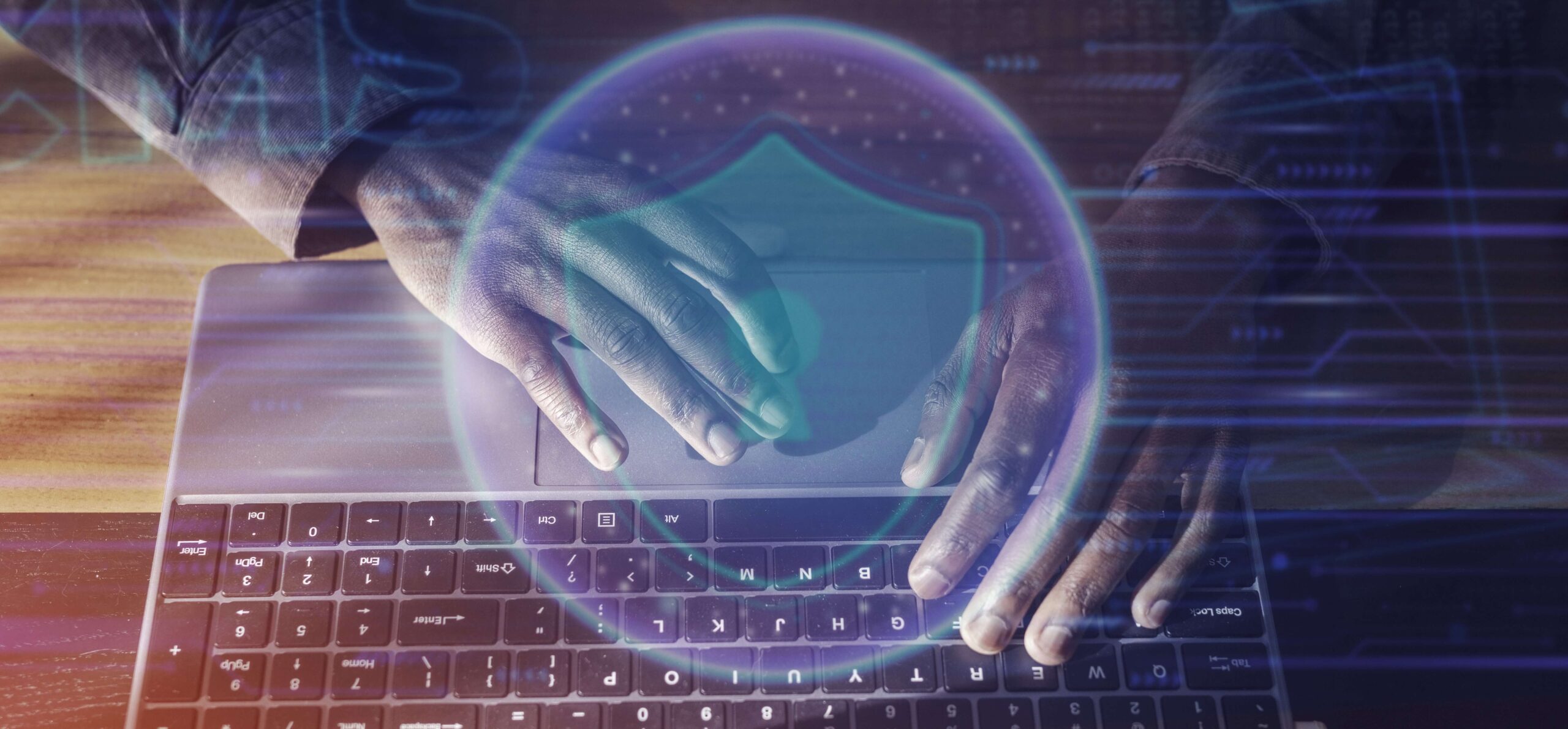Digital Forensics in Law Enforcement
Digital forensics in law enforcement refers to the application of scientific techniques and methodologies to collect, analyze, interpret, and preserve digital evidence obtained from electronic devices and digital storage media as part of criminal investigations. This specialized field encompasses a range of practices, including data recovery, forensic analysis, and the presentation of findings in legal proceedings. Digital forensics enables law enforcement agencies to uncover critical information, such as communications, documents, images, and metadata, which can be used to identify suspects, establish timelines, and support prosecutions in cases involving cyber crimes, financial fraud, child exploitation, terrorism, and other offenses. It involves adherence to strict procedures to ensure the integrity and admissibility of evidence in court, including maintaining chain of custody, preserving data integrity, and employing certified forensic tools and methodologies.
Highlighting the use of digital forensics in law enforcement investigations:
1. Evidence Retrieval
Digital forensics involves the systematic collection and analysis of digital evidence from various electronic devices. This process typically begins with the acquisition of data from the target device, ensuring that the original data remains intact and unaltered. Specialized forensic tools are used to create forensic images or copies of storage media, preserving the evidentiary value of the data.
Once the data is acquired, forensic analysts employ a range of techniques to extract relevant evidence. This evidence can include:
Emails
Forensic software can recover emails from email client applications or webmail services, providing insights into communications between suspects, accomplices, or victims.
Text Messages
Deleted or hidden text messages can be recovered from smartphones or other mobile devices, revealing conversations related to criminal activities.
Images and Videos
Forensic tools can recover photos, videos, and multimedia files stored on digital devices. These images and videos may contain evidence of illegal activities, such as drug trafficking, child exploitation, or violence.
Documents
Documents stored on computers, tablets, or cloud storage services can be examined for incriminating information, such as forged documents, financial records, or plans for criminal acts.
Browsing History
Analysis of browsing history and internet activity can provide insights into suspects’ online behavior, including visits to illicit websites, research on criminal methods, or communication with co-conspirators.
Metadata
Digital files often contain metadata such as timestamps, location data, and user information. Forensic analysis of metadata can corroborate the authenticity of evidence and establish a timeline of events.
2. Identification of Suspects
Digital evidence can be instrumental in identifying suspects involved in criminal activities. Forensic analysts analyze various types of digital evidence to trace the digital footprint left by suspects. This may include:
IP Addresses
By examining network logs, server records, or communication protocols, investigators can identify the IP addresses associated with suspicious activities. IP address analysis can help trace the origin of cyberattacks, unauthorized access attempts, or online fraud schemes.
User Accounts
Analysis of user accounts, login credentials, and access logs can reveal the identities of individuals using electronic devices or online services. This information can link suspects to specific devices, accounts, or online activities.
Device Fingerprints
Each electronic device has a unique set of characteristics, known as device fingerprints, which can be used to identify and differentiate devices. Forensic analysis of device fingerprints, such as serial numbers, hardware configurations, or software installations, can help track down stolen or compromised devices and link them to suspects.
Communication Patterns
Analysis of communication patterns, including call logs, messaging histories, and social media interactions, can provide insights into suspects’ social networks, affiliations, and behaviors. Detecting patterns of communication between suspects can help investigators identify key players in criminal networks or conspiracy schemes.
3. Case Reconstruction
Digital forensics plays a crucial role in reconstructing the sequence of events in a case by analyzing various digital artifacts:
Timestamps
Timestamps associated with files, emails, messages, and other digital data provide chronological information about when specific actions occurred. Forensic analysts examine timestamps to establish timelines of events, such as when a file was created, modified, or deleted. By correlating timestamps across multiple pieces of evidence, investigators can reconstruct the sequence of actions taken by suspects.
File Metadata
Metadata embedded within digital files contains valuable information about their origin, authorship, and history. Forensic analysis of file metadata can reveal important details, such as the device used to create or modify a file, the software applications involved, and the user accounts associated with the file. This information helps investigators understand how digital evidence was generated, manipulated, or transmitted.
Digital Artifacts
Digital devices leave behind a variety of artifacts that can provide insights into user activities and behaviors. These artifacts include browser history, system logs, registry entries, and temporary files. Forensic analysis of digital artifacts can uncover patterns of behavior, preferences, and interactions that shed light on suspects’ motives and intentions. For example, examining browser history may reveal research on illegal activities, while analyzing system logs may show attempts to cover up evidence of wrongdoing.
4. Cyber crime Investigations
Digital forensics is essential in investigating a wide range of cyber crimes, including hacking, malware distribution, online fraud, and identity theft:
Tracing the Source of Cyberattacks
Digital forensic analysis can help trace the source of cyberattacks by examining network logs, server records, and other digital artifacts. Investigators use techniques such as IP address analysis, packet sniffing, and intrusion detection to identify the origin of malicious activities. This information is crucial for attributing cyberattacks to specific individuals or groups and initiating legal action against them.
Identifying Vulnerabilities in Systems
Digital forensics can uncover vulnerabilities in computer systems, networks, and software applications that may have been exploited by cyber criminals. By analyzing system configurations, patch histories, and security logs, investigators can identify weaknesses that allowed unauthorized access or data breaches to occur. This information enables organizations to implement remediation measures to strengthen their cybersecurity posture and prevent future attacks.
Attributing Malicious Activities
Forensic analysis of digital evidence can attribute malicious activities to specific individuals or groups by identifying unique signatures, techniques, and tools used in cyberattacks. This attribution is based on factors such as modus operandi, coding styles, and infrastructure patterns. By linking digital evidence to known cyber criminals or threat actors, investigators can build strong cases for prosecution and disruption of criminal operations.
4. Child Exploitation Cases
Digital forensics is indispensable in cases involving the exploitation of children, including the production, distribution, and possession of child pornography. Law enforcement agencies use a variety of forensic tools and techniques to combat these crimes:
Image and Video Analysis
Forensic analysts examine images and videos recovered from electronic devices to identify victims, perpetrators, and locations depicted in the content. This analysis can help law enforcement identify and rescue victims of child exploitation, as well as track down individuals involved in the production and distribution of illegal material.
Metadata Examination
Digital forensics experts analyze metadata associated with digital images and videos to establish the origin, authenticity, and history of the files. Metadata can provide valuable information about when and where the content was created, edited, and shared, helping investigators build a timeline of events and establish connections between suspects and criminal activities.
Online Investigations
Digital forensics is used to conduct online investigations into forums, websites, and online communities where child exploitation material is shared and traded. Law enforcement agencies use forensic tools to monitor online activities, gather intelligence, and identify individuals involved in these illicit networks.
Victim Identification
Forensic analysis of digital evidence can help identify victims of child exploitation by matching images and videos to known databases of child abuse material. This information is crucial for identifying and rescuing victims, as well as providing support services and counseling to those affected by these crimes.
5. Financial Crimes
Digital forensics is instrumental in investigating financial crimes such as fraud, embezzlement, and money laundering. Forensic analysts use specialized tools and techniques to uncover evidence of financial irregularities:
Transaction Analysis
Forensic experts analyze financial records, transaction logs, and electronic communications to identify suspicious activity, such as unauthorized transfers, fraudulent transactions, or money laundering schemes. By tracing the flow of funds through digital channels, investigators can uncover patterns of criminal behavior and track down individuals responsible for financial crimes.
Email and Communication Analysis
Digital forensics is used to analyze emails, chat logs, and other electronic communications to uncover evidence of fraudulent schemes, collusion, or insider trading. This analysis can reveal conversations between suspects, financial transactions, and plans to defraud victims or manipulate markets.
Asset Recovery
Digital forensics is used to trace and recover assets stolen through financial crimes, such as embezzlement or fraud. Forensic experts analyze financial records, bank statements, and digital transactions to identify hidden assets, offshore accounts, or illicit investments. This information is crucial for recovering stolen funds and returning them to their rightful owners.
Evidence Presentation
Digital evidence obtained through forensic analysis is presented in court proceedings to support prosecutions and secure convictions against offenders. Forensic experts may testify as expert witnesses to explain the methods used to collect, analyze, and interpret the evidence, helping jurors understand the significance of the digital evidence in the case.
6. Supporting Legal Proceedings
Digital evidence obtained through forensic analysis is admissible in court proceedings and can be used to support prosecutions, secure convictions, and ensure justice is served. Digital forensic experts play a crucial role in presenting and explaining the significance of digital evidence in legal proceedings:
Expert Testimony
Forensic analysts may testify as expert witnesses in court proceedings to explain the methods used to collect, analyze, and interpret digital evidence. Their testimony helps jurors understand the technical aspects of digital forensics and the relevance of the evidence to the case.
Chain of Custody
Digital evidence must be collected, preserved, and documented according to strict chain of custody procedures to ensure its admissibility in court. Forensic experts maintain detailed records of the handling and storage of digital evidence, demonstrating its integrity and reliability.
Demonstrative Evidence
Digital forensic experts may create demonstrative evidence, such as forensic reports, timelines, or visualizations, to illustrate key findings and support their conclusions. These visual aids help simplify complex technical information and enhance jurors’ understanding of the case.
7. Preventing Crime
Digital forensics also plays a proactive role in law enforcement by helping prevent future crimes:
Digital Trends Analysis
Law enforcement agencies analyze digital trends, such as emerging cyber threats, online criminal activities, and social media trends, to anticipate and respond to potential threats. By monitoring digital channels and gathering intelligence, agencies can identify patterns of criminal behavior and take proactive measures to disrupt criminal activities before they occur.
Vulnerability Assessment
Digital forensics is used to conduct vulnerability assessments of computer systems, networks, and critical infrastructure to identify weaknesses that may be exploited by cyber criminals. By identifying and addressing security vulnerabilities, organizations can strengthen their defenses and prevent unauthorized access, data breaches, and cyber attacks.
Intelligence Sharing
Law enforcement agencies share intelligence and collaborate with other organizations, such as government agencies, private sector partners, and international law enforcement agencies, to exchange information and coordinate efforts to combat cyber crime and other digital threats. By sharing intelligence and resources, agencies can enhance their collective ability to prevent and respond to digital crimes effectively.
Case study
Silk Road (marketplace)
Silk Road was an online black market and the first modern dark net market.It was launched in 2011 by its American founder Ross Ulbricht under the pseudonym “Dread Pirate Roberts.” As part of the dark web,Silk Road operated as a hidden service on the Tor network, allowing users to buy and sell products and services between each other anonymously. All transactions were conducted with bitcoin, a cryptocurrency which aided in protecting user identities. The website was known for its illegal drug marketplace, among other illegal and legal product listings. Between February 2011 and July 2013, the site facilitated sales amounting to 9,519,664 Bitcoins.
In October 2013, the Federal Bureau of Investigation (FBI) shut down the Silk Road website and arrested Ulbricht.Silk Road 2.0 came online the next month, run by other administrators of the former site,but was shut down the following year as part of Operation Anonymous. In 2015, Ulbricht was convicted in federal court for multiple charges related to operating Silk Road and was given two life sentences without possibility of parole.The Silk Road case involved an online marketplace on the dark web, operated by the pseudonymous “Dread Pirate Roberts”(DPR), later identified as Ross Ulbricht. The website facilitated illegal drug sales and other criminal activities. Law enforcement agencies conducted a digital forensic investigation to dismantle the operation.Ross Ulbricht was arrested in October 2013 in San Francisco, where the FBI seized his laptop used to manage the marketplace. He was indicted on charges including engaging in criminal enterprise, narcotics trafficking, and money laundering. Ulbricht’s trial began in January 2015, during which he admitted to founding Silk Road but claimed to have transferred control to others.
The prosecution presented evidence from Ulbricht’s computer, contradicting his claims of relinquishing control. In February 2015, Ulbricht was convicted on multiple charges, including engaging in criminal enterprise and narcotics trafficking. He was sentenced to life imprisonment without parole and ordered to forfeit $183 million.
During the trial, two former federal agents involved in the investigation were arrested for wire fraud and money laundering. Ulbricht’s appeal was denied in 2017, and the Supreme Court declined to review the case.
The Silk Road case exemplifies the significant role of digital forensics in combating cyber crime and prosecuting individuals involved in illegal online activities. It also highlights the challenges of investigating and prosecuting complex cases involving the dark web and cryptocurrency transactions.
Best Practices:
Preservation of Evidence
Ensure the preservation of digital evidence in a forensically sound manner to maintain its integrity and admissibility in court.
Use specialized tools and procedures to create forensic images of storage devices without altering the original data.
Follow established protocols for evidence handling to prevent contamination or tampering.
Chain of Custody
–Maintain a clear chain of custody for digital evidence to demonstrate its integrity and reliability.
–Document every step of the evidence handling process, including who collected the evidence, when it was collected, and how it was stored.
–Implement secure storage measures to prevent unauthorized access to digital evidence.
Compliance with Legal Standards
–Adhere to legal standards and regulations governing digital evidence collection and analysis.
–Obtain proper authorization and warrants before conducting digital forensic investigations.
–Ensure compliance with laws related to privacy, data protection, and electronic surveillance.
Collaboration and Training
–Foster collaboration between law enforcement agencies, digital forensic experts, and prosecutors to ensure effective investigations and prosecutions.
–Provide ongoing training and education for investigators and forensic analysts to keep them updated on the latest techniques and tools in digital forensics.
–Encourage knowledge sharing and collaboration with external partners, such as academia, industry experts, and international law enforcement agencies.
Continuous Improvement
–Continuously evaluate and improve digital forensic capabilities to keep pace with evolving technology and emerging threats.
–Invest in research and development of new forensic techniques, tools, and methodologies.
–Conduct regular audits and quality assurance checks to ensure the reliability and accuracy of digital forensic processes and procedures.
Conclusion
In conclusion, digital forensics plays a vital role in law enforcement investigations by enabling the collection, analysis, and interpretation of digital evidence from electronic devices and digital storage media. Through evidence retrieval, identification of suspects, case reconstruction, cyber crime investigations, and support in legal proceedings, digital forensics provides critical insights that aid in solving crimes and bringing perpetrators to justice.
The Silk Road case study clarify the importance of digital forensics in preventing cyber crime, particularly in complex cases involving the dark web and cryptocurrency transactions. The successful prosecution of Ross Ulbricht for operating Silk Road highlights the effectiveness of digital forensic techniques in uncovering digital evidence and supporting legal proceedings.
Moreover, adherence to best practices such as preservation of evidence, maintaining chain of custody, compliance with legal standards, collaboration and training, and continuous improvement is essential for ensuring the integrity and admissibility of digital evidence in court.
Overall, digital forensics continues to evolve as technology advances, and law enforcement agencies must stay vigilant, continuously improve their forensic capabilities, and collaborate with experts to effectively combat digital crimes and protect public safety.
Discover more from Amigo Cyber
Subscribe to get the latest posts sent to your email.
-
Previous Post
Legal Aspects of Digital Forensics
-
Next Post
Future Trends in Digital Forensics











